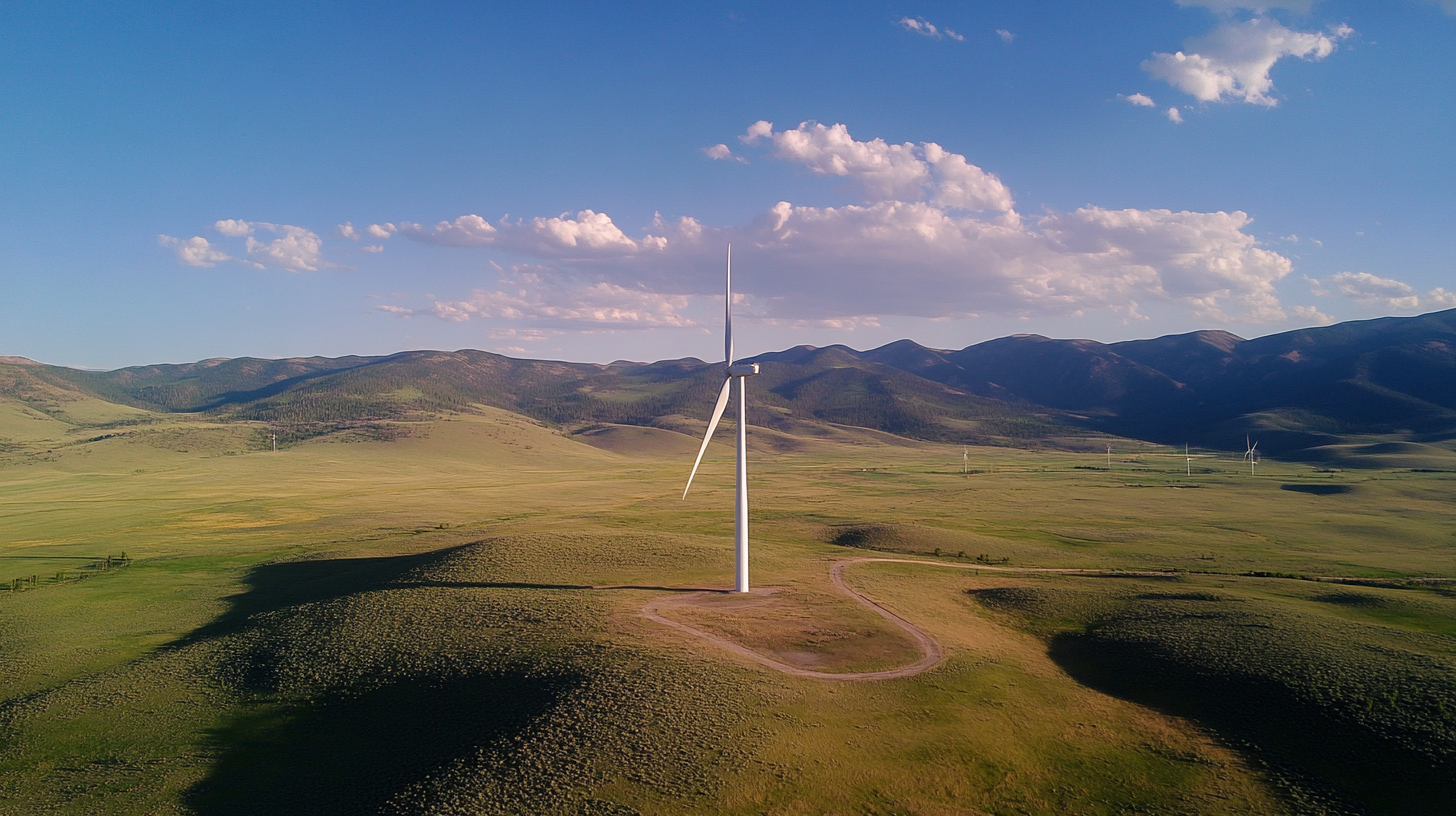The global wind energy market is experiencing unprecedented growth, with cumulative wind electricity capacity expected to surpass 1,000 GW by the end of 2023, according to the Global Wind Energy Council (GWEC). This rapid expansion underscores the need for standardized practices and compliance strategies in trading wind electricity to ensure sustainability and reliability in this burgeoning sector. As countries strive to meet their renewable energy targets, understanding the best practices in certification and compliance becomes crucial for stakeholders aiming to navigate the complexities of the international market.
In addition, the International Renewable Energy Agency (IRENA) reports that wind electricity could provide up to 35% of global electricity generation by 2050, highlighting the importance of not only incorporating robust trading standards but also promoting a harmonized approach to certification across borders. As diverse regulations and certification processes exist worldwide, this guide aims to provide a comprehensive overview of global certification and compliance strategies, enabling stakeholders to capitalize on the immense potential of wind electricity while minimizing risks associated with trade inconsistencies.

The global wind energy market has witnessed remarkable growth in recent years, driven primarily by advancements in technology and increasing investment in renewable energy sources. According to the National Renewable Energy Laboratory (NREL), the offshore wind energy market is projected to undergo significant expansion, with the United States aiming for 30 gigawatts (GW) of offshore wind capacity by 2030. This ambitious goal highlights the shift towards sustainable energy and the necessity for robust infrastructure and effective regulatory frameworks.
In 2023, the offshore wind energy sector experienced substantial growth, as evidenced by NREL's annual market assessment. The report indicates that offshore wind installations in the U.S. reached nearly 10 GW, demonstrating an increase in both domestic capacity and global interest. Moreover, the global wind turbine operation and maintenance market is estimated to grow significantly, driven by the increasing number of operational wind farms and the need for reliability and efficiency in operations. It is anticipated that the market size will surpass USD 20 billion by 2027, necessitating innovative strategies for enhancing service delivery and compliance with international standards.
Furthermore, countries are investing heavily in the development of offshore wind farms, which are expected to play a crucial role in meeting carbon reduction targets and fostering energy independence. With estimates suggesting that global offshore wind capacity may reach 200 GW by 2030, industry stakeholders must prioritize compliance with established certification standards to ensure safe and sustainable growth in this dynamic market. This adherence to standards not only supports environmental goals but also enhances market competitiveness as the world transitions to cleaner energy.
In the evolving landscape of renewable energy, the international certification standards for wind electricity trade are gaining prominence, particularly in light of recent regulations such as the EU's Battery and Waste Battery Regulation. Effective from August 17, 2023, this legislation mandates that, starting February 18, 2025, all introduced energy storage batteries in the EU market must include a carbon footprint declaration. This regulatory shift highlights the growing focus on sustainability and compliance within global markets, posing challenges and opportunities for manufacturers, especially those in countries like China facing green trade barriers.
As the Chinese offshore wind industry undergoes significant changes, including the loosening of domestic production requirements, this could foster increased international competition and innovation. The offshore wind localization policy, which has been in force for over seven years, is set to relax, enabling developers to procure international components without heavy local sourcing mandates. This shift is critical as companies navigate the complexities of compliance with global standards while striving for efficiency and technological advancement.
Additionally, events like the recent tax penalties faced by leading turbine manufacturer Goldwind underscore the importance of adhering not only to environmental standards but also to fiscal regulations in this competitive arena. As players in the wind energy sector gear up to align with international certification standards, the convergence of compliance strategies and global market dynamics will shape the future of wind electricity trade.

Navigating the regulatory frameworks surrounding wind electricity trade is crucial for stakeholders aiming to ensure compliance while maximizing market opportunities. According to the Global Wind Energy Council's (GWEC) annual report, the global wind sector is expected to grow at a compound annual growth rate (CAGR) of 10.3%, reaching an estimated 1,196 GW by 2025. However, navigating the complex landscape of regulations requires a thorough understanding of compliance strategies tailored to specific markets.
In the European Union, for instance, the Renewable Energy Directive (RED II) sets ambitious targets for renewables, mandating a specific percentage of wind energy in the total energy mix by 2030. Stakeholders must prioritize adherence to these regulations to capitalize on subsidies and incentives. A compliance-oriented approach includes establishing rigorous environmental assessments and adhering to local grid codes, ensuring that projects not only meet regulatory standards but also enhance their competitiveness in bidding processes.
Additionally, in the United States, the Federal Energy Regulatory Commission (FERC) has established policies aimed at promoting renewable energy integration into the grid. Market participants must align with these regulations, which include requirements for assessing the interconnection of wind facilities. The National Renewable Energy Laboratory (NREL) reports that states with robust compliance mechanisms experience up to 40% more wind capacity installations compared to those lacking such frameworks. By focusing on regulatory adherence, stakeholders in the wind electricity sector can facilitate smoother project approvals and improve their competitive position within emerging markets.

The impact of certifications on wind energy project financing and investment returns cannot be overstated. As the global demand for renewable energy surges, precise certifications play a pivotal role in guiding investors and project developers. Research indicates that projects awarded certifications can experience reduced financing costs, as they can more easily attract investment from institutional players seeking to fulfill environmental, social, and governance (ESG) criteria. For instance, investments in certified wind energy projects have been shown to yield returns 5-10% higher than their non-certified counterparts, which in turn accelerates capital flow into the sector.
In Indonesia, the urgency to attract approximately US$146 billion in renewable energy investments by 2030 highlights the necessity for robust certification frameworks. By providing a clear set of standards, certifications can significantly enhance market confidence and reduce perceived risks for investors. Countries that effectively implement and maintain certification standards position themselves advantageously in the global marketplace, thereby unlocking potential funding channels and partnerships.
Moreover, noteworthy projects such as the Empire Wind 1 in New York underline the critical nature of contract awards in advancing wind energy initiatives. This 810 megawatt offshore project not only exemplifies effective compliance with local and national energy regulations but also strengthens investor confidence. The framework established by certification standards, therefore, not only fosters investor interest but also catalyzes advancements in technology and innovation across the wind energy spectrum. As financial instruments like ILX Fund I emerge, channeling private capital into these markets will be fundamental, particularly in regions that are seeking to enhance their renewable energy portfolios.
The wind energy sector has seen a remarkable transformation in compliance approaches, driven by an increasing emphasis on sustainability and global trade standards. A prime example can be observed in Siemens Gamesa’s project in the North Sea. Their compliance journey began with a rigorous assessment of their supply chain, ultimately leading to a 20% reduction in costs through enhanced operational efficiencies, demonstrating the tangible benefits of adhering to international wind electricity trade protocols. According to the International Renewable Energy Agency (IRENA), global wind capacity reached 743 GW by the end of 2020, emphasizing the importance of standardized compliance amid such explosive growth.
Another noteworthy case is the collaboration between Vestas and the Danish Energy Agency, which established a comprehensive certification program. This initiative not only streamlined project approvals but also cut the average time to market by approximately six months. By aligning production and installation processes with ISO 9001 standards, Vestas achieved a significant uptick in project reliability, reinforcing their position as a leader in the wind energy market. The 2021 Global Wind Report by GWEC outlines that wind energy employed more than 1.3 million people worldwide, underscoring the critical role of compliance and certification strategies in supporting this rapidly expanding workforce.
The success stories in compliance strategies highlight the need for continuous improvement in the wind energy sector. As companies navigate the complexities of international regulations, the experiences of industry leaders underline how effective compliance can not only mitigate risks but also enhance competitive advantage. The World Wind Energy Association forecasts that installed capacity could surpass 1,200 GW by 2025 if these standards are adhered to, making it imperative for firms to stay ahead of compliance challenges in this fast-evolving landscape.
| Company Name | Country | Certification Achieved | Compliance Strategy | Outcome |
|---|---|---|---|---|
| WindCorp | USA | ISO 14001 | Sustainability Audits | Reduced emissions by 30% |
| EcoWinds | Germany | IEC 61400 | Rigorous Testing Procedures | Increased turbine efficiency |
| GreenTech | Canada | OSHA Compliance | Workplace Safety Programs | Zero workplace accidents |
| Renewable Solutions | Australia | REI Certification | Community Engagement | Local support for projects |